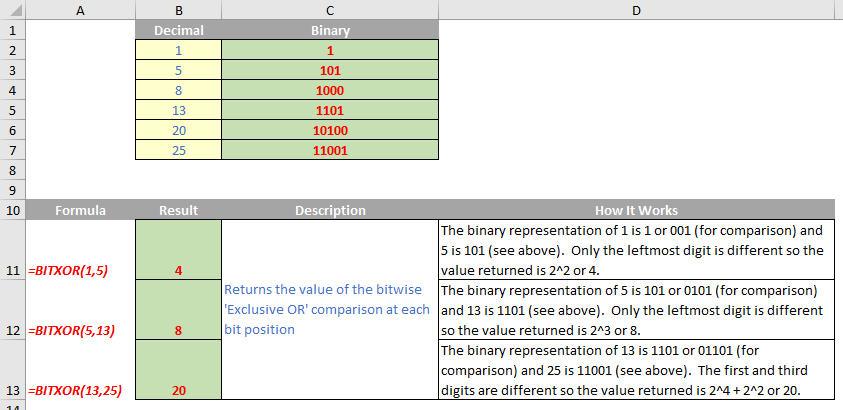A to Z of Excel Functions: The BITXOR Function
17 March 2017
Welcome back to our regular A to Z of Excel Functions blog. Today we look at the BITXOR function.
The BITXOR function
This function returns a bitwise ‘XOR’ of two numbers (XOR was first introduced in Excel 2013 and at the current rate of publishing these articles we should get to this one by 2044). Essentially, BITXOR converts two numbers to binary expressions and compares the digits at each position from right to left. If the values are not equal, the function returns a 1 for that position (bit). For each 1, its position is ascertained and converted to a power of 2 (2^0 for the rightmost position, 2^1 for the value to its left, 2^2 for the value to the left of this and so on). These corresponding powers of two are then summed.
The BITXOR function employs the following syntax to operate:
BITXOR(number1, number2)
The BITXOR function has the following arguments:
- number1: this is required and must be greater than or equal to 0
- number2: also required. This must be greater than or equal to 0.
It should be further noted that:
- BITXOR returns a decimal number that is the result of the sum of a bitwise 'XOR' (exclusive XOR) of its parameters
- if either argument is outside its constraint, BITXOR returns the #NUM! error value
- if either argument is greater than (2^48)-1, BITXOR returns the #NUM! error value
- if either argument is a non-numeric value, BITXOR returns the #VALUE! error value
- in the result, each bit position is 1 if the values of the parameters at that bit position are not equal; in other words, one value is 0 and the other is 1. For example, using BITXOR(5,3), 5 is expressed as 101 in binary and 3 as 11 in binary. To help with comparison, you can consider 3 as 011. From right to left, the bit values at the three positions in this example are the same (1) only at the rightmost position. A 'not equal' result returns a 1 for the second and third positions from the right, and an ‘equal’ result returns 0 for the rightmost position
- values of 1 returned from the bit positions progress from right to left as powers of 2. The rightmost bit returns 1 (2^0), the bit to the left returns 2 (2^1), and so on
- using the same example, 0 is returned for the rightmost bit position because it is a 0, 2 (2^1) is returned for the second bit position from the right (a 1 value), and 4 (2^2) is returned for the leftmost bit (also a 1 value). The total is 6, in decimal representation.
Please see my example below:

We’ll continue our A to Z of Excel Functions soon. Keep checking back – there’s a new blog post every other business day.

